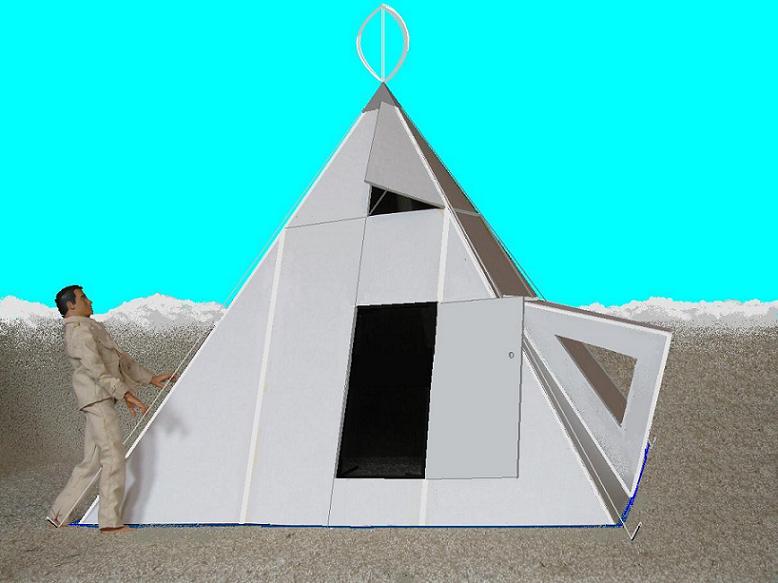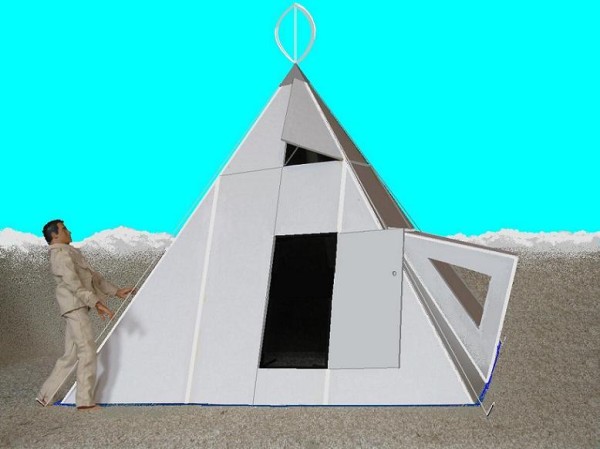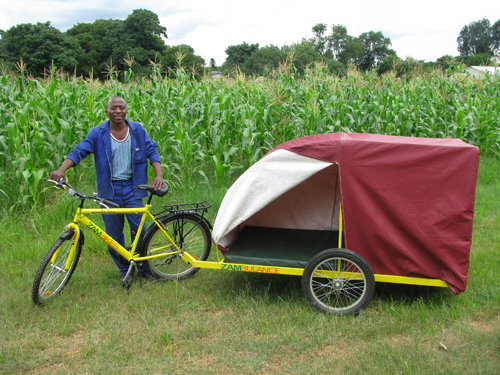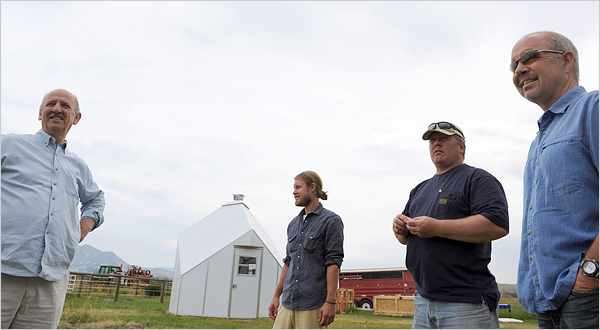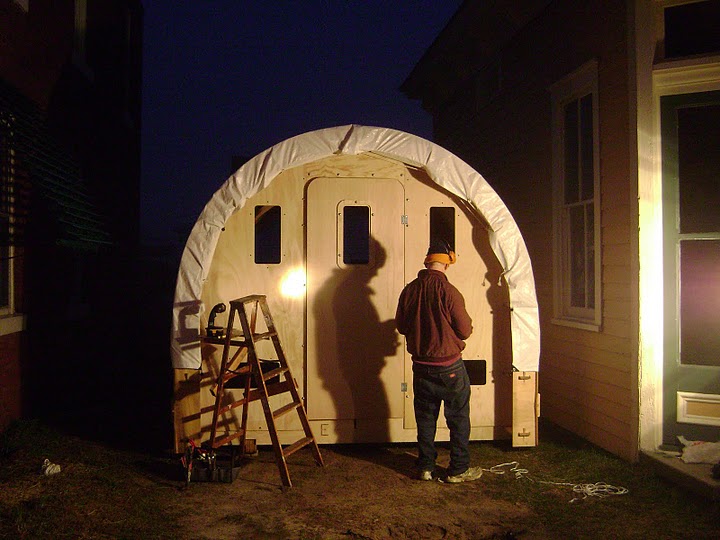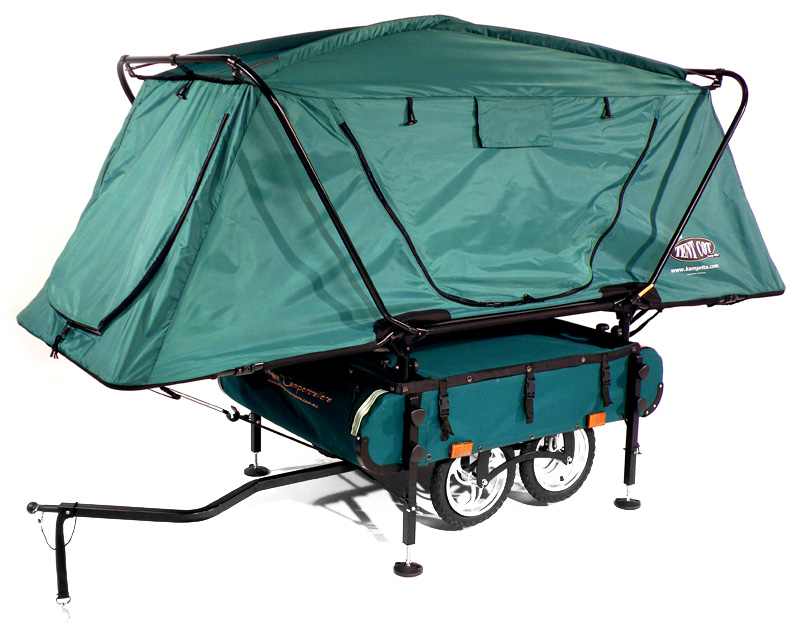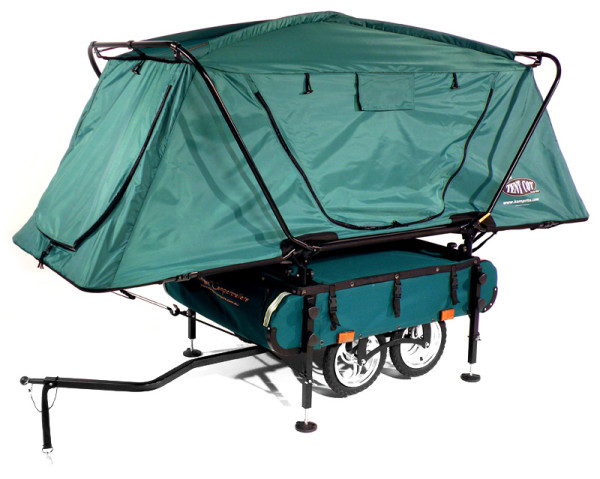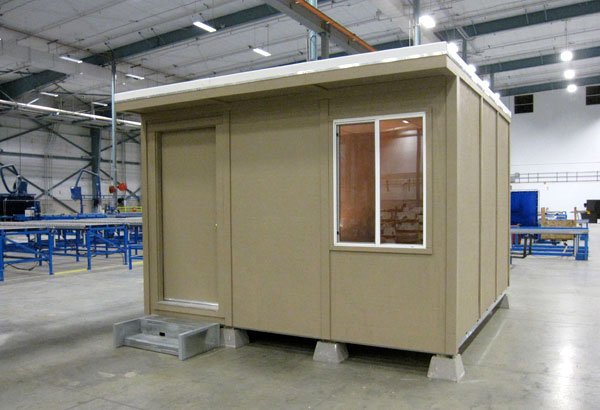Paul Elkins previously share with us his Cadillac of Homeless Shelters and has come up with an idea for an emergency shelter that I though you would enjoy seeing.
This 12′ by 12′ square shelter design was influenced by the designer of the Hexayurt. This will be my 2011 Burningman shelter for my wife and I. It also has shown possibilities as a rapid deployment cold weather Emergency Shelter.
The design consists of 10-one inch thick 4’x8′ foil backed foam insulation panels. Like the Hexayurt, the panels will be supported with tape only. No structural framing should be needed. (I’m keeping my fingers cross) The design also makes for virtually no waist in construction material. The adjoining corners will be mitered for a tight fit, and when stored it will fold like an accordion into a 4’x8’x10″ thick light weight package. Set-up time shouldn’t take too long as only a few seams need to be tapped once it’s unfolded. To secure the structure from high winds, lines from a small aluminum cap will run down to each corner of the shelter.
